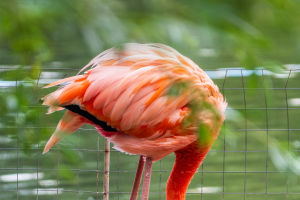Hello, Lykkers! If you're thinking about adopting a new pet, the budgie (also known as the budgerigar) might be the perfect choice for you! These tiny, cheerful birds have been loved by pet owners for centuries.
Their charming personalities, playful nature, and ability to mimic human speech make them a favorite around the world. Let's dive into the fascinating world of budgies and see why they make such wonderful companions!
What Are Budgies?
Budgies, scientifically known as Melopsittacus undulatus, are small, long-tailed parrots. Native to Australia, these birds are often referred to as "parakeets" or "budgies," and they have become one of the most popular pet birds globally. They are known for their vibrant plumage, friendly personalities, and remarkable ability to mimic human speech. In fact, their mimicking skills are one of the key reasons why they have been cherished as pets for over a century.
Natural Habitat and Distribution
In the wild, budgies are found in a variety of ecosystems, including shrubs, forests, grasslands, and farmland. They are highly social creatures and often live in large flocks that can number anywhere from a few dozen to over 20,000 birds! Their natural habitat is in the arid regions of Australia, where they migrate with the seasons—spending the winter months in the northern parts of the country and the summer in the south.
Physical Characteristics
Budgies are small birds, measuring around 18 cm in length (including the tail) and weighing between 30 and 40 grams. Their body shape is compact, with a long tail and wings that can span up to 30 cm. The most common wild type of budgie is a yellow-green bird, adorned with black markings on the head and back, giving them a striped appearance reminiscent of a tiger's stripes. They have yellow feathers on their face, with blue-violet cheek patches and a black "necklace" around their neck.
The males and females look quite similar, with the main difference being the color of their cere (the fleshy part above the beak). While the cere of a male turns blue as it matures, a female’s cere typically stays pale and may turn brown when she’s ready to breed.
Colors and Varieties
Budgies come in a variety of colors, thanks to selective breeding. The original wild-type budgies are yellow-green, but over the years, breeders have developed many different color morphs, including blue, white, and even albino varieties. The feathers of some domestically bred budgies may also lack the typical black markings, and their backs may appear much lighter than the wild type.
Diet and Feeding
In the wild, budgies primarily eat seeds, berries, and tender leaves from various plants. During the autumn months, they are known to forage for grains in farmlands. Budgies are particularly fond of millet, which is a common food in pet stores. It's essential to offer them a balanced diet, including seeds, fruits, and vegetables, to keep them healthy and happy.
Breeding and Life Cycle
Budgies are capable of breeding throughout the year, though in their natural habitat, breeding typically occurs after the rainy season when food is abundant. In captivity, budgies often nest in tree hollows or birdhouses, where they lay between 4 and 7 eggs. The female incubates the eggs for about 18 days, and after 30 days, the chicks are ready to leave the nest and start learning how to fly.
It’s interesting to note that budgies can reach reproductive maturity at just 5 to 6 months of age! However, they can live up to 12 years in captivity, with some even reaching 20 years or more.
Caring for Budgies
Taking care of a budgie is relatively easy, and they make fantastic pets for people of all ages. They require a spacious cage with plenty of perches, toys, and room to fly. It’s important to keep them mentally stimulated, so providing them with activities like swings, ladders, and even puzzles is essential for their happiness.
Budgies can also be trained to do simple tricks and can be taught to mimic words and phrases. With consistent training and interaction, they can learn to recognize their names, address, and even simple commands.
Why Are Budgies Great Pets?
There are several reasons why budgies make wonderful pets. First, they are small and require relatively little space, making them ideal for apartments or homes with limited room. Second, they are very social and love interacting with their owners, so they thrive on attention. Third, their ability to mimic human speech is truly remarkable, providing endless entertainment for their owners. And, of course, their cheerful, colorful appearance brightens up any room.
In conclusion, if you’re looking for a pet that is both fun and easy to care for, a budgie mightbe exactly what you need. With their charming personalities and vibrant plumage, they bring joy to any household. Whether you're a first-time pet owner or an experienced bird enthusiast, budgies are sure to win your heart.
Final Thoughts
So, Lykkers, what do you think? Could a budgie be your next pet? These adorable little birds are not only fun and engaging but also make wonderful companions. We'd love to hear from you! Have you ever had a budgie, or are you considering adopting one? Share your thoughts in the comments below – let's chat about these lovely creatures!
How to Care for a Budgie
Video by Bird Nuggets


